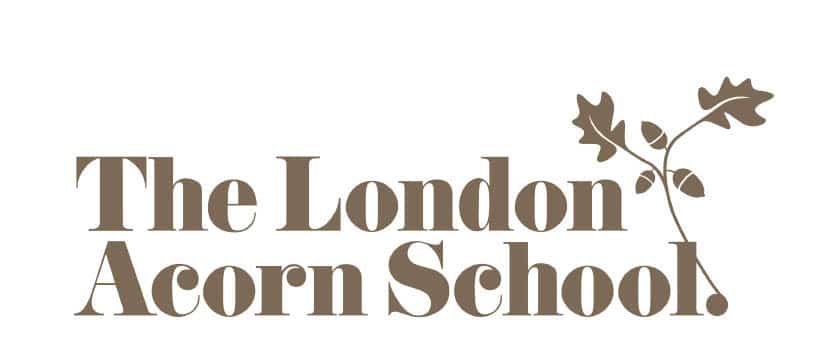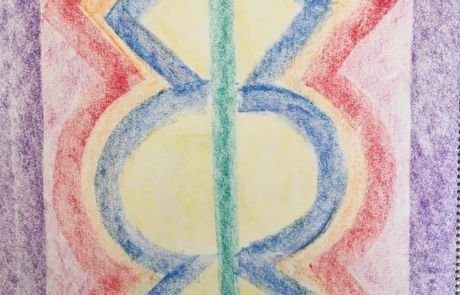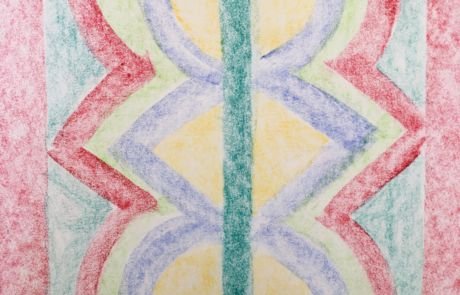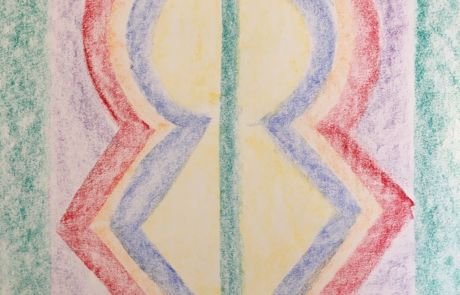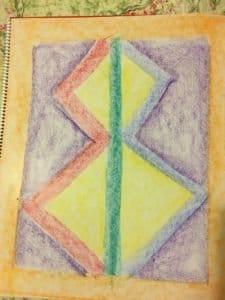
This form consists of two lines on each side of the central vertical symmetry line; first the blue lines, then the red. The other colours between and around are shading that comes at the end.
Set up your skipping rope in a straight line. The student stands at the top of the rope on one side and walks the shape of the form on one side, then on the other. If they have a sibling or a parent handy, two can walk together, mirroring the other.
Once secure with walking the form, with the pointer finger of the writing hand, draw a straight line in the air. On one side of this line, draw the form, then draw it on the other – with the same hand. Then try two hands together, mirror images either side of the line in the air.
Take out the practice paper and with the pointer finger of the drawing hand, draw a straight vertical line down the centre of the paper – no crayons yet, just fingers. Then ‘map out’ the form either side of the line. The form should fill the page. Now take your crayons and use the mumma bear side of your dark green block to draw your best, most careful straight line down the middle – just like you just carefully mapped out. Use the mumma bear side of your blue block for the left hand side – you chose: light or dark blue, use the mumma bear side of your red block to draw the right hand side. DO NOT COLOUR IN YOUR PRACTICE FORM.
Once you feel secure, your lines are strong and symmetrical, draw in your borders and put your form in your Form Drawing lesson book. Practice on your practice paper first to make sure you can draw them straight. Draw your blue lines first, then your red. Golden yellow goes in the centre. Make sure your form fills your page.
In Form Drawing basic straight and curved lines and shapes are made and drawn by the children, preferably making the shapes with their whole body to begin with (walking, running, sweeping movements of the arms and hands) and later using stick crayons on paper. Having been experienced in movement, these shapes and rhythms are then brought to rest by drawing them on paper. All this requires the children to make purposeful, concentrated efforts in movement, a medium ideally suited to them. The shapes have no outer meaning, neither do they depict anything in particular, rather they make the dynamic of movement and shape visible in space. The children learn to experience, feel and understand the inherent quality and nature of different shapes and movements. Experiencing the inner nature of something through movement is one of the basic themes in Classes 1 to 3. Form drawing is also an excellent preliminary exercise to cursive writing in Class 2 and the introduction of geometry in Class 5. Such exercises stimulate the activity of forming mental pictures, an activity which both engages the will and stimulates the feelings. In a sense the life of feeling is used as an organ of perception. The child feels the balance, proportion, symmetry, integration and character of the forms and the dynamic movements they embody.
